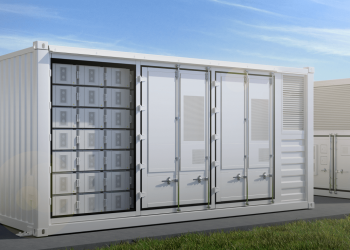At the 2025 Global Public Sector Cloud & AI Summit, Huawei introduced its “R.I.S.E” National Government Cloud reference architecture. Designed to empower governments worldwide, this cutting-edge cloud framework combines robust cloud infrastructure with AI capabilities, aiming to foster innovation, improve public services, and support the digital transformation of national governance.
Huawei’s Ambitious Vision for National Cloud Infrastructure
Huawei’s “R.I.S.E” architecture is built on the foundation of cloud and AI technologies to provide secure and efficient platforms for managing public data, AI, and digital identities. It aims to address key challenges such as data security, privacy, and governance while enhancing the quality of services offered by governments. By fostering an open ecosystem, this architecture allows for localized management of technologies like national AI, ultimately leading to better governance.
Li Junfeng, Vice President of Huawei and CEO of the Global Public Sector Business Unit, highlighted the importance of cloud-first and AI strategies adopted by more than 80 countries. Huawei’s framework not only supports cloud infrastructure but also optimizes data aggregation, processing, and value extraction for improved service delivery in the public sector.
The Core Features of the “R.I.S.E” Architecture
The “R.I.S.E” National Government Cloud framework focuses on four key pillars:
- Resilient & Reliable Infrastructure:
The architecture ensures governments have access to resilient, reliable infrastructure, using multi-site disaster recovery systems, 1+7 layered security protections, and deterministic operations and maintenance (O&M). This guarantees data security and stable performance of critical public applications. - Secure & Sovereign:
Addressing national digital sovereignty concerns, Huawei offers several deployment models including public cloud, full-stack dedicated cloud, and Huawei Cloud Stack. These models enable secure data storage, flow, and utilization while supporting the sovereignty of national data. - Innovative & AI-Ready:
The framework establishes AI-powered platforms for government applications. By integrating AI, the architecture facilitates the use of high-quality data for applications such as intelligent agents and digital IDs. These AI capabilities enhance public service delivery and governance efficiency. - Enriched Ecosystem:
Huawei has partnered with over 100 ecosystem players globally, accelerating the digital and intelligent transformation of public services. This collaboration also extends to talent development across nine strategic domains like ICT, AI, and big data, helping nations build a sustainable, intelligent future.
Leveraging Huawei’s Expertise to Address Public Sector Needs
Huawei’s experience, derived from over 800 government cloud projects, has played a critical role in shaping the “R.I.S.E” architecture. Through its partnership with global governments, Huawei has gained valuable insights into the unique challenges facing national digital transformation efforts. The architecture is tailored to meet the specific needs of the public sector, enabling seamless data exchange, improving government efficiency, and ensuring secure service delivery.
A Game-Changer for Public Sector Governance
Huawei’s introduction of the “R.I.S.E” framework marks a pivotal moment in the evolution of digital governance. By combining AI and cloud infrastructure, Huawei provides a scalable, secure platform that helps governments transition to more efficient, data-driven operations. The integration of AI into government services fosters innovation and ensures that public services are not only efficient but also intelligent and people-centric.
Looking forward, Huawei will continue to deepen the integration of AI and cloud technologies to help governments build more efficient, intelligent, and sustainable systems of governance. The launch of the National Government Cloud framework is just the beginning of this transformative journey.







